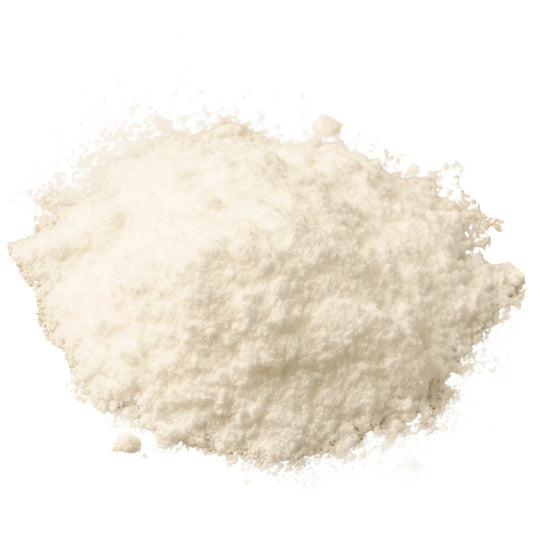
A Guide To Heat Sensitive Plant Extracts
Juliette van der MeerPlant extracts come in various forms: essential oils, carrier oils and butters, hydrosols and other kinds of botanical extracts in solvents. All the plant extracts are much loved because of their unique beneficial properties, fatty acid profiles and active components, but because they are all extracted from plants, some can be rather delicate and even sensitive to high heat.
When creating products from scratch, we often make use of heated phases, but having a heat sensitive ingredient in these phases can render it less beneficial and potentially destroy some of its precious active properties. Let's discuss how to figure out if a plant extract is heat sensitive and how to work with it if it is.
How do you determine whether an oil is heat sensitive or not?
In short, it comes down to how well you know your oils! Let's get into some chemistry quickly. Carrier oils are part of a class called lipids, which are composed of chain-like molecules of hydrogen, carbon and oxygen known as glycerols, as well as fatty acids (which can be saturated and unsaturated). Phospholipids, fat soluble minerals and vitamins, phytosterols, tocopherols etc can also be part of the mix, and contribute to the oil's unique benefits. The oil is extracted from the plant via cold pressing or refining.
In general, the higher the unsaturated fat content of the oil, the more heat sensitive the oil will be. Unsaturated fats are oils that are liquid at room temperature, are typically of vegetable origin, and crucially, have at least one double bond in their fatty acid molecular chain. They are considered to be healthy fats in dietary terms. On the other end of the spectrum you get saturated fats where all the fatty acid chains only have single bonds (ie. the bonds are all saturated/filled).
You will need to research the oil's composition to find out if it has a high unsaturated fat content or not, in order to determine its heat sensitivity.
A similar way to determine heat sensitivity is to look up the iodine value of the oil. The iodine value is a measure of an oil's degree of unsaturation, and in general the higher the iodine value (ie. the more unsaturated it is) the more sensitive the oil is, as already explained above. If an oil has a high iodine value you will need to protect it from heat, light and oxygen. You should generally not heat oils with an iodine value of more than 100 for long periods of time. If required, you can gently heat them for very short periods of time, and we recommend adding in an antioxidant such as Vitamin E oil to help protect it.
Besides the unsaturation factor, one should also consider any unique properties of the oil when deciphering its heat sensitivity.
- Does it contain vitamins or omega fatty acids which are thermally unstable?
- Is it refined or unrefined/cold pressed? - Refined oils have likely already been through a heating process and are therefore more likely to hold up against heat. -Cold pressed oils are considered more delicate so you should treat them appropriately.
Are Butters Heat Sensitive?
Butters have high concentrations of saturated fats and low iodine values. They are not heat sensitive, but are very heat stable and are great to add to the heated phase!
Are Essential Oils Heat Sensitive?
Essential oils are extracted from plant matter via steam distillation. While their production is a heated process, the resulting essential oils will always be sensitive to heat due to their delicate components and volatility, and therefore you should only add them to your formulation during the cool down phase. Cool down is generally considered to be 40 degrees C and below.
Are Hydrosols Heat Sensitive?
Hydrosols are a by-product of the essential oil distillation process and have therefore been through heat already too. They contain trace amounts of the essential oil as well as other components not found in essential oils. While some authorities say that since they have already gone through a heating process, further heating in formulations should not affect their properties, others prefer not to heat hydrosols for fear of them evaporating and losing some of their properties. So this is up to the user's discretion. If you were to ask us, it is preferable to add them to formulations at 40 degrees C and below to truly preserve their properties. However sometimes you will want to make an emulsion with a hydrosol as the aqueous base and this will require it to be heated. Make sure you heat it gently and keep it covered so it doesn't evaporate. Don't keep it heated for too long.
Are Glycerites Heat Sensitive?
Glycerites are a type of botanical extract that uses glycerine as the solvent to absorb the properties of the botanicals. While glycerine itself is heat stable, the properties of the botanicals are likely to be more delicate, so we advise adding glycerites to your cool down phase.
Other Kinds of Botanical Extracts
Besides glycerites there are many other kinds of botanical extracts. Solvents like propanediol, oil, vinegar, alcohol and even plain old water are all used to make botanical extracts. While some may be heat stable, others will not be; it will be determined by the solvent and kinds of botanicals used.
In general, extracts are always added to the cool down phase to preserve their active properties.
You can learn how to make your own glycerites and botanical extracts in the Botanical Extracts Series.



















